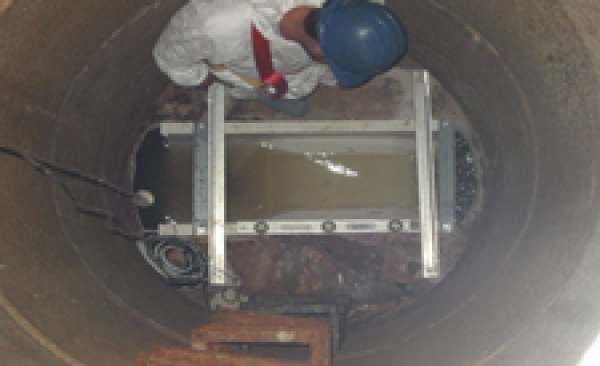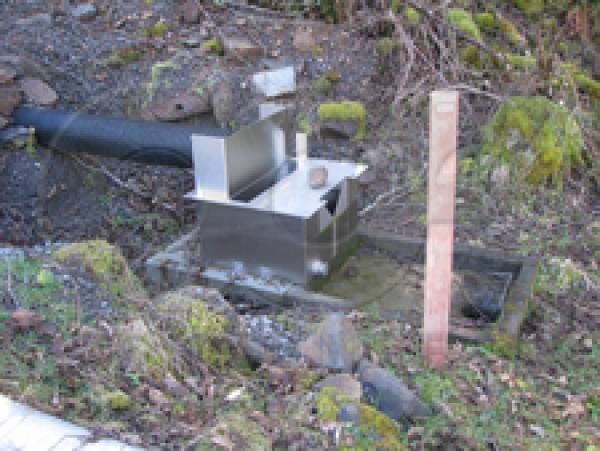This website uses a variety of cookies, which you consent to if you continue to use this site. You can read our Privacy Policy for
details about how these cookies are used, and to grant or withdraw your consent for certain types of cookies.
Measuring UV Disinfection Discharge at WWTPs
One problem application we see time and time again is measuring the flow out of a UV disinfection system. To keep the UV bulbs cooled and to increase the treatment efficiency of the disinfection system, usually the UV system provided has V-shaped overflow weirs just downstream of the lamp banks.
Many times we see a Parshall flume placed immediately downstream of the overflow weirs in an attempt to measure the plant effluent. Unfortunately, the overflow from the V-weirs is quite turbulent. This turbulence has a direct impact on the downstream flume’s ability to accurately measure the flow.

When flow measurement is desired downstream of a UV disinfection system, attention must still be paid to providing the necessary upstream channel conditions.
In general:
- If the width of the throat of the flume is less than half the width of the channel, there should be (20) straight run throat widths upstream of the flume.
- If the throat width is more than half the channel width, then there should be (10) straight run throat widths upstream of the flume.
In the installation above, turbulent flow from the overflow weirs never settles before it enters the Parshall flume. The result is that the centerline turbulence is sensed by the ultrasonic sensor mounted above the channel. The result is that the flow meter consistently indicates a flow rate higher than what is actually being experienced at the site. Had the flume been positioned further downstream, the turbulence would have subsided and the flow readings correct.
To correct this situation, perforated plates were placed immediately upstream of the flume. The plates act to normalized the flow across the width of the channel and dampen the surface turbulence so that it can enter the flume in a controlled manner.
Pay attention to the site requiemetns of the flume you are going to use and you can’t go wrong. Don’t and you’ll be scratching your head as to why your flow numbers just aren’t right.
Related Blog Posts
Explore more insights in our blog.

LOCATIONS IN ATLANTA, GA & BOISE, ID




